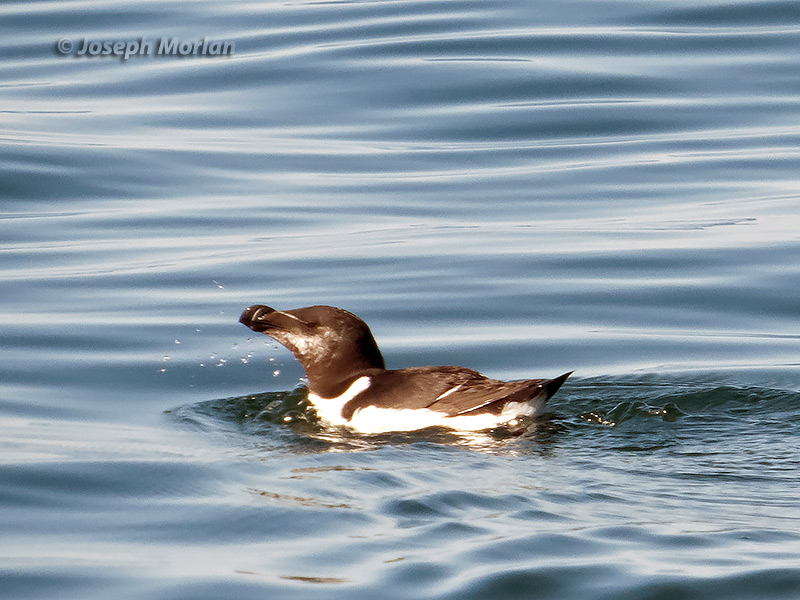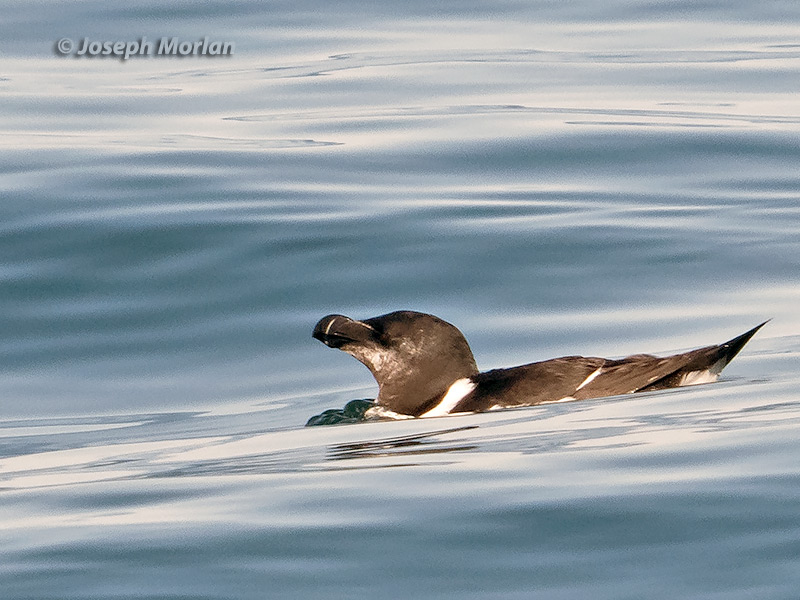

This individual is in winter plumage. In breeding plumage, adults have their head entirely black. Razorbills are listed as "Near threatened" by IUCN because of recent steep declines in its core breeding colonies in Iceland. One cause is a crash in sand-eel numbers possibly related to climate change. Two subspecies are recognized. Based on range, this is presumably the larger nominate race. A smaller race (A. t. islandica) is confined to the NE Atlantic. Measurements overlap between the two and some have questioned the validity of A. t. islandica. Canon PowerShot SX50 HS.
References:
BirdLife International. 2015. Alca torda. The IUCN Red List of Threatened Species 2015: e.T22694852A82978388. http://dx.doi.org/10.2305/IUCN.UK.2015-4.RLTS.T22694852A82978388.en. Downloaded on 25 October 2016.
Lavers, Jennifer, J. Mark Hipfner and Gilles Chapdelaine. (2009). Razorbill (Alca torda), The Birds of North America (P. G. Rodewald, Ed.). Ithaca: Cornell Lab of Ornithology; Retrieved from the Birds of North America: https://birdsna.org/Species-Account/bna/species/razorb